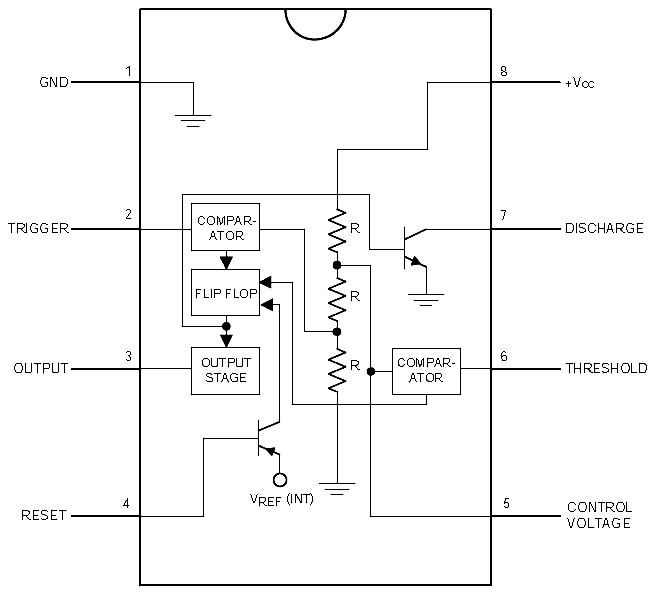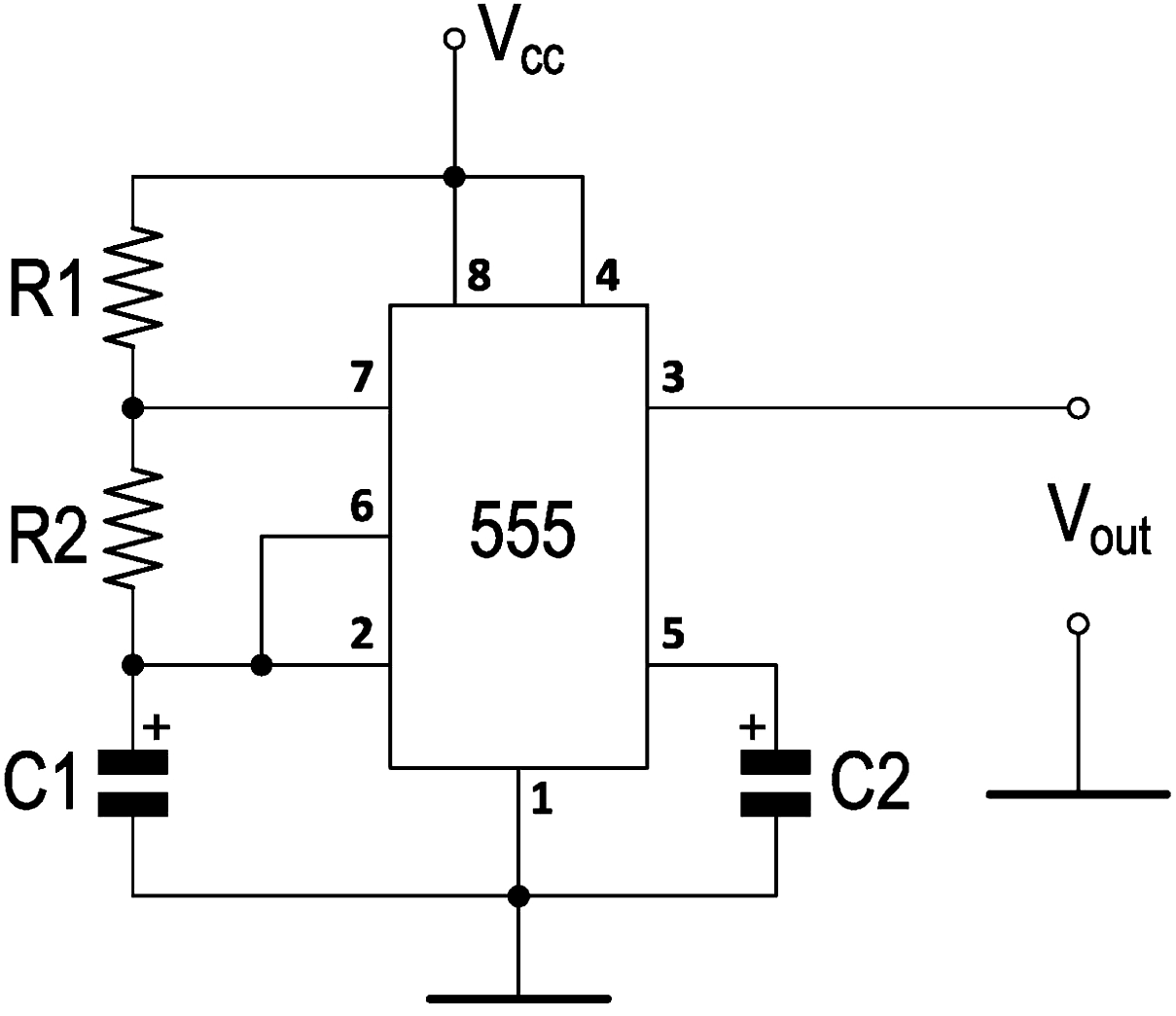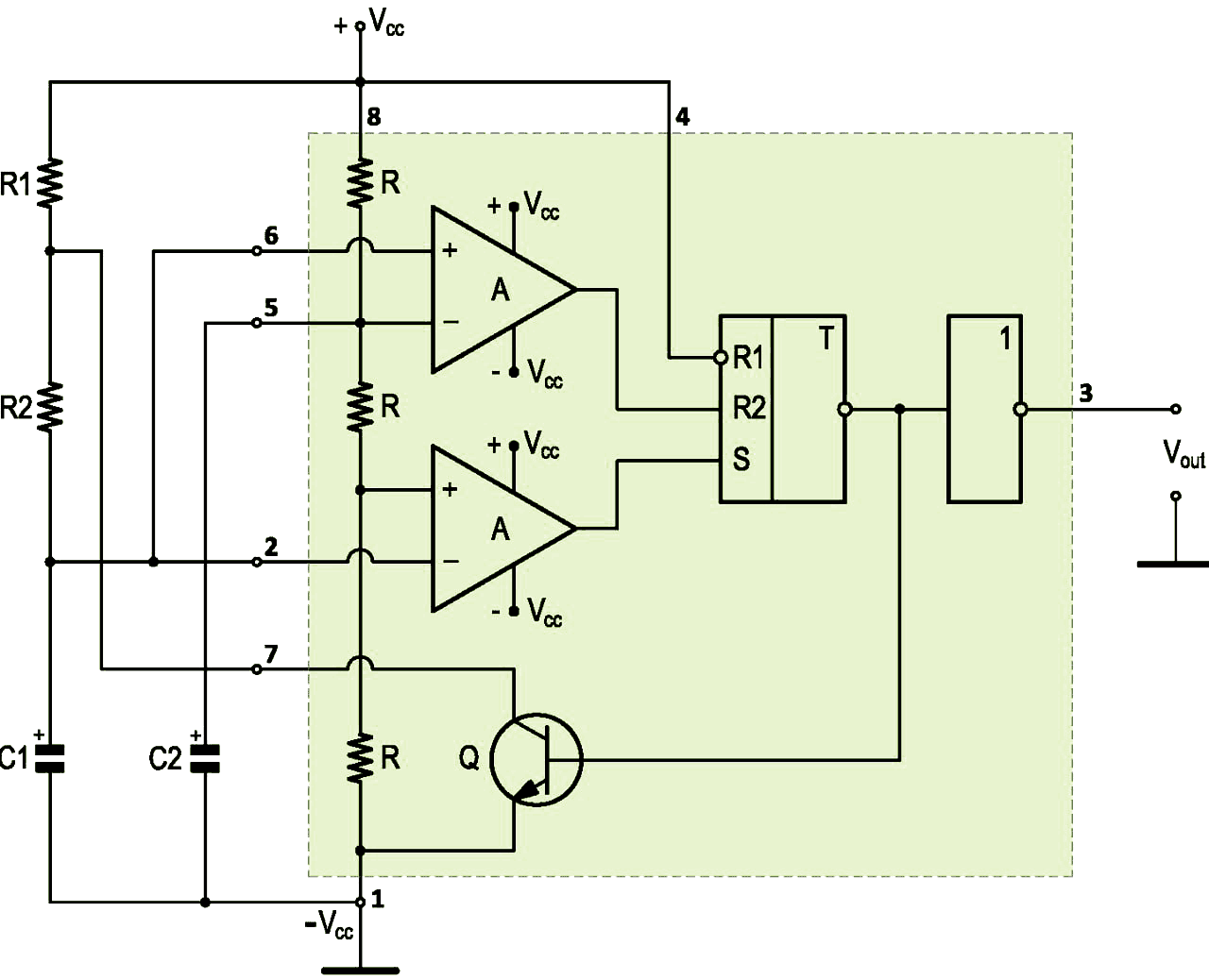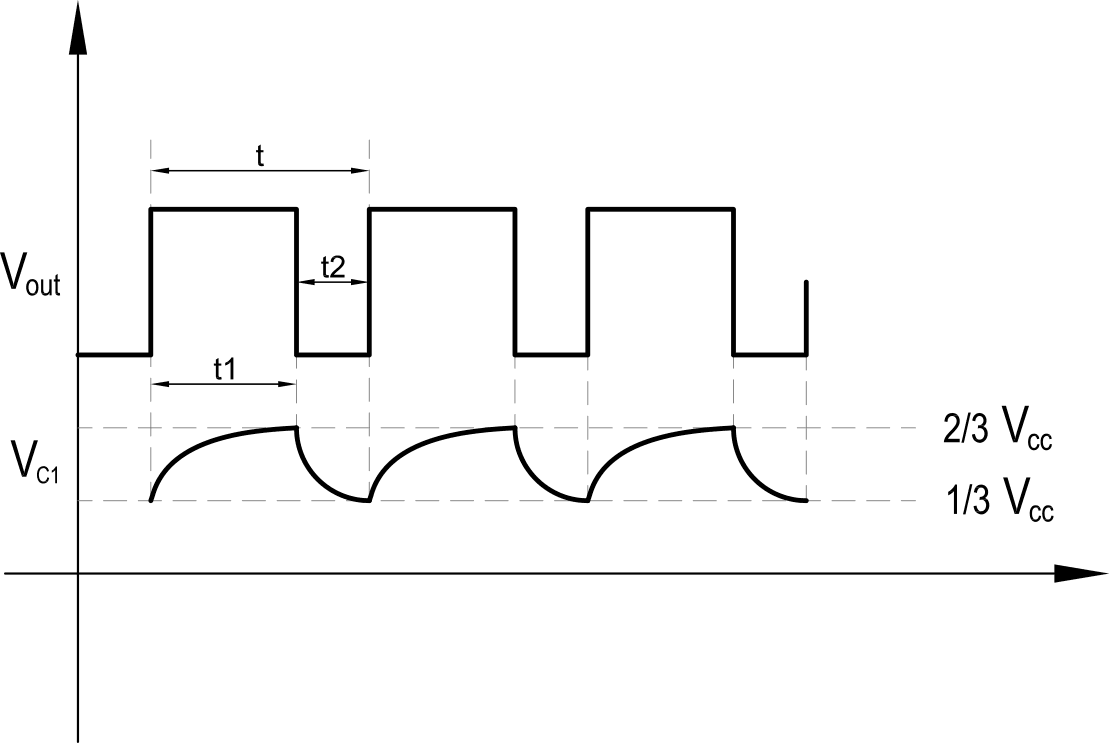| www.tmatlantic.com
Test & Soldering Equipment On-line Store |
|
D.E.V.I.C.E. (Wiki)Calculators Services |
|||||
Filter by first letter
|
Square wave generator using IC 555A square pulse generator built on the basis of the popular 555 microcircuit works as a multivibrator i.e. in self-oscillating mode. This is a mode in which impulses arise themselves, without any external influences. The structure of IC 555 (see Texas Instruments LM555) is shown in Figure 1.
The generator circuit based on IC 555 is shown in Figure. 2
To better describe the operating principle of the generator, Figure 3 shows a diagram of IC 555 with external elements.
The operating principle descriptionWhen turned on, capacitor C1 is discharged (voltage at 2 Pin IC 555 is less than 1/3 Vcc), and trigger comparator A2 that will operate and generate a high level at the S input of the built-in flip-flop. The voltage at the 6th Pin of IC 555 is less than 2/3 Vcc, which means comparator A1, which generates the signal at input R2, is turned off. Thus, after turning on the built-in trigger, it will be set to 1, a logical 0 will appear at its inverse output, a high level will be set at the timer output, the transistor with the output on Pin 7 will close and capacitor C1 will begin to charge through resistors R1, R2. In this case, the voltage on Pin 2 and Pin 6 will increase. At the moment when the voltage on Pin 2 rises to 1/3 Vcc, the Set signal disappears and the comparator for setting the built-in trigger is turned off. At the moment when the voltage on Pin 6 rises to 2/3 Vcc (that is, the voltage on the capacitor becomes slightly more than 2/3 Vcc), a Reset will immediately be formed at the input of trigger R2. This signal (Reset R2) will reset our trigger and its output will go high. In this case, the output of the timer (Pin 3) will be set to a low level. the transistor on Pin 7 will open and capacitor C1 will begin to discharge through resistor R2. The voltage at Pin 2 and Pin 6 will begin to drop. As soon as the voltage of ns C1 becomes slightly less than 2/3 Vcc, the upper comparator will switch again and the Reset signal at input R2 will disappear. But the trigger can only be set to state 1 using the Set signal (at the S input), so it will remain in the reset state. As soon as the voltage on C1 drops to 1/3 Vcc (in reality, it will become a little less than 1/3 Vcc), the lower comparator will work again, generating the Set signal at the S input, and the trigger will again be set to 1. Zero will appear at its output again (as output is inverse) One will appear at the output of the entire IC – Pin 3. The transistor at Pin 7 will close and the capacitor will begin charging again. Thus, the described process will continue continuously - charging the capacitor through R1, R2 from 1/3 Vcc to 2/3 Vcc (at Pin 3 - high level), then discharging the capacitor from 2/3 Vcc to 1/3 Vcc through resistor R2 (Pin 3 output is low level).
From the description you can see how our circuit works as a rectangular pulse generator in a self-oscillating mode. To calculate the pulse frequency, you can use the formula
f = 1 / (0.693 * C1 * (R1 + 2 * R2)), In this formula:
t1 – pulse duration As follows from the calculation, in such a generator circuit it is impossible to obtain an exact filling of 50%, that is, a clear meander. To easily calculate the pulse frequency, pulse and pause durations and other parameters of a circuit use our online calculator or variable frequency square wave generator calculator. |
|
Site mapPrivacy policyTerms of Use & Store PoliciesHow to BuyShippingPayment |





























